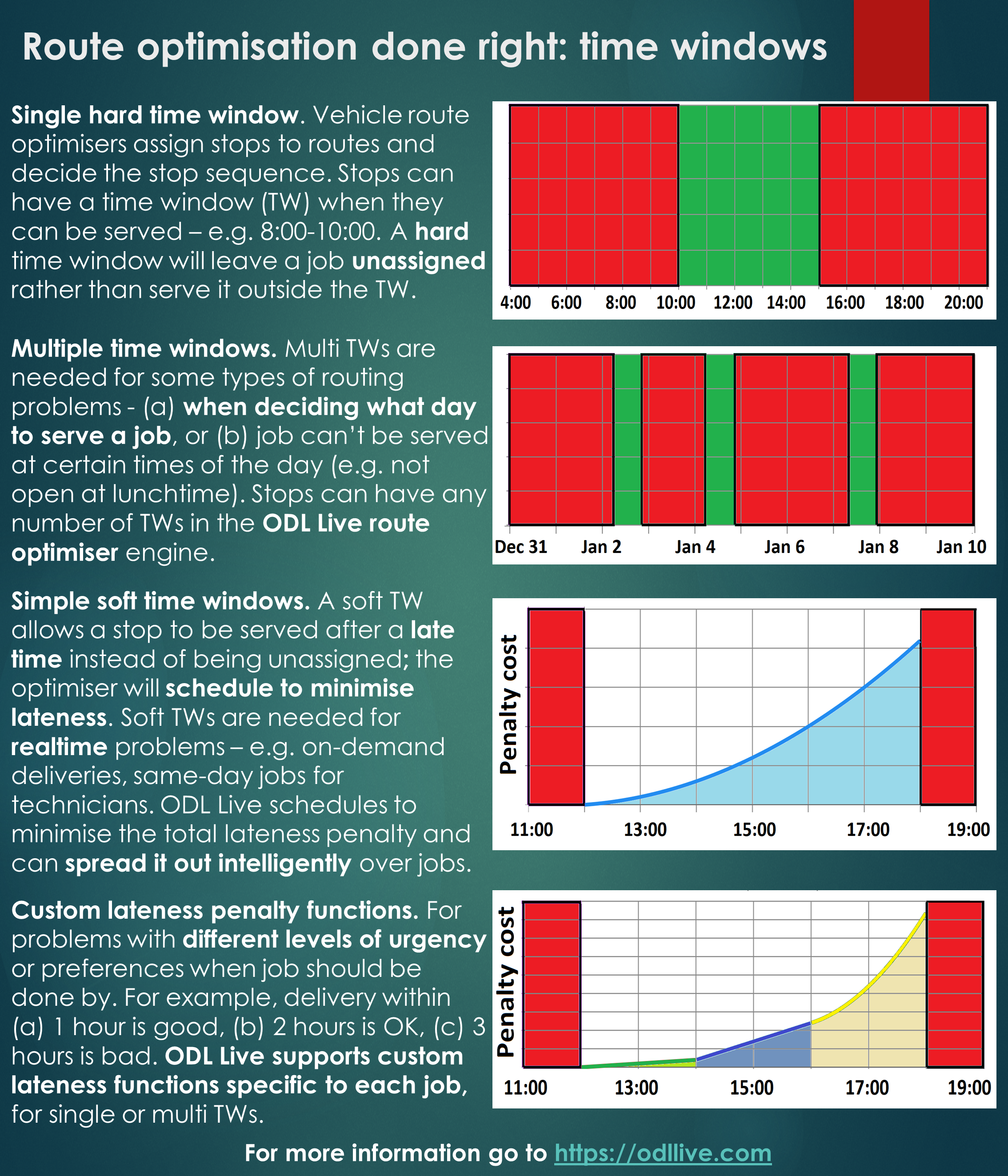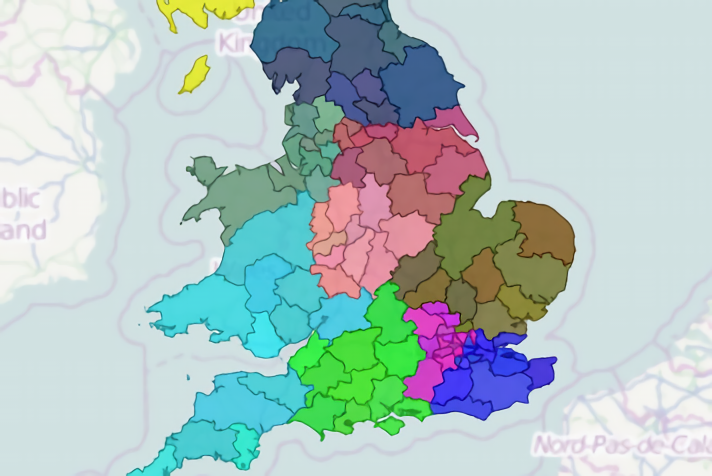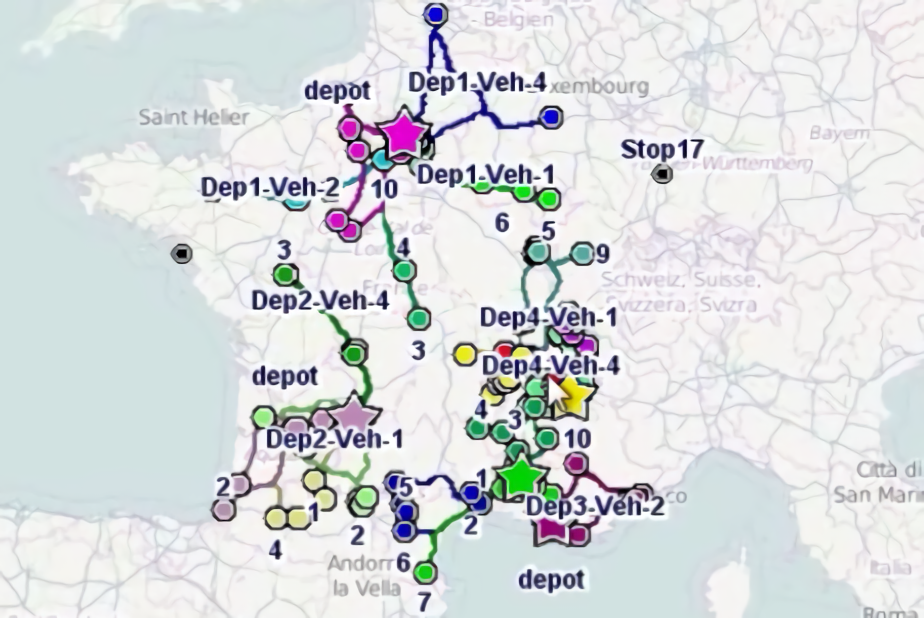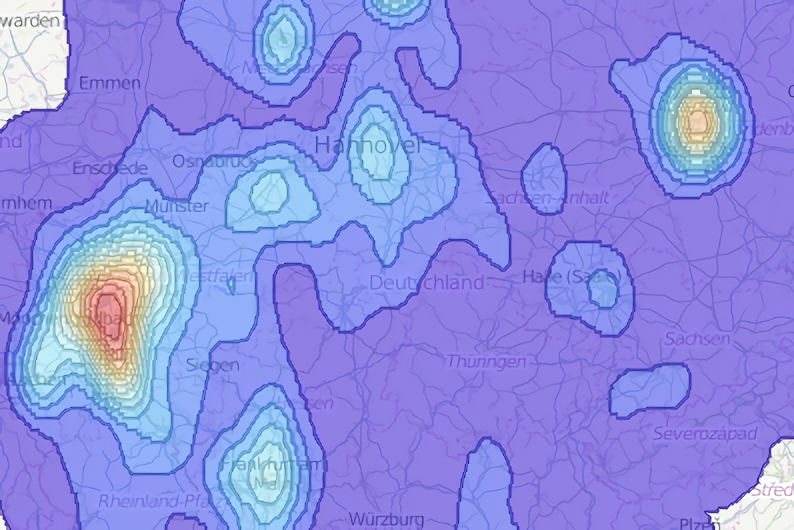
Route optimisation done right - time windows
Posted 02 Mar 2021
This is the second post in our ‘route optimisation done right’ series, where we consider time windows. A time window is the earliest and latest time a stop can be served in a vehicle routing problem. Most (if not all) commercial vehicle route optimiser engines support time windows, but many of them just support a single hard time window. This works for simple ‘next-day delivery from a depot’ type problems, but many real-world routing problems require more flexible ways to define time windows.
ODL Live supports 4 different types of time window:
-
Single hard time window. Stops can have a single time window (TW) when they can be served – e.g. 8:00-10:00. A hard time window will leave a job unassigned rather than serve it outside the TW.
-
Multiple time windows. Multi TWs are needed for some types of routing problems - (a) when deciding what day to serve a job, or (b) job can’t be served at certain times of the day (e.g. not open at lunchtime). Stops can have any number of TWs in the ODL Live route optimiser engine.
-
Simple soft time windows. A soft TW allows a stop to be served after a late time instead of being unassigned; the optimiser will schedule to minimise lateness. Soft TWs are needed for realtime problems – e.g. on-demand deliveries, same-day jobs for technicians. ODL Live schedules to minimise the total lateness penalty and can spread it out intelligently over jobs.
-
Custom lateness penalty functions. For problems with different levels of urgency or preferences when job should be done by. For example, delivery within (a) 1 hour is good, (b) 2 hours is OK, (c) 3 hours is bad. ODL Live supports custom lateness functions specific to each job, for single or multi TWs.



